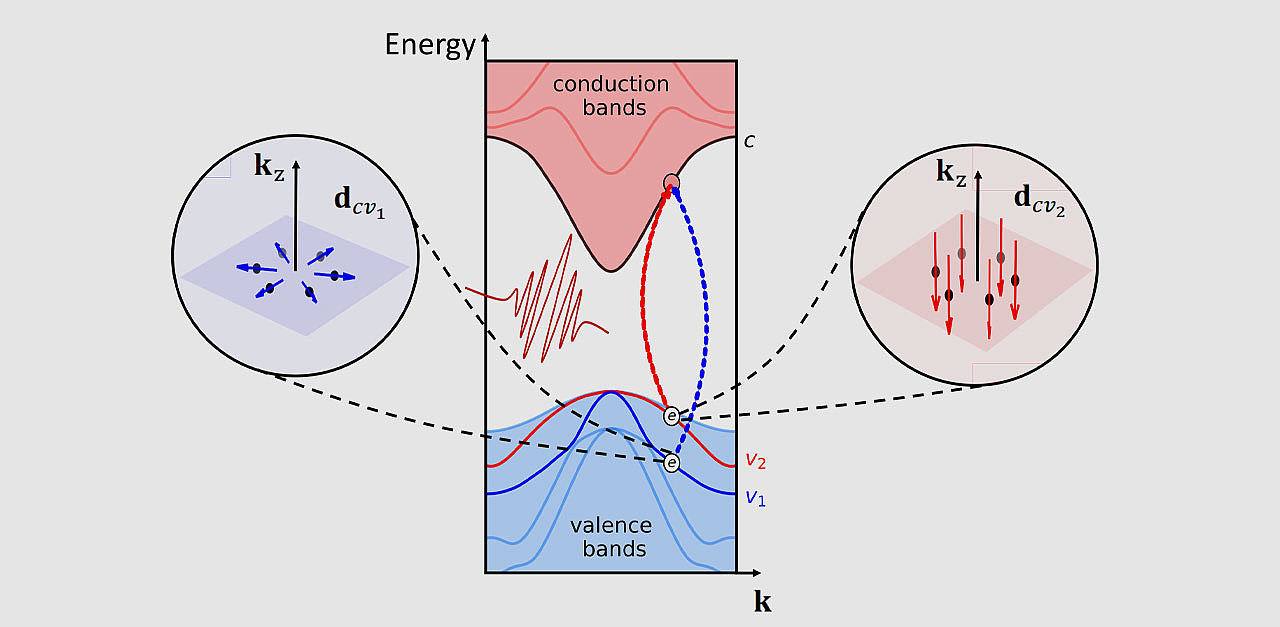Photoexcitation by an intense, few-cycle laser pulse usually turns transparent solids into absorbing media because multiphoton transitions mainly deplete the upper valence band and populate the lowest conduction band. Theoretical research in the Attosecond metrology 2.0 group has shown that this is not always the case. Under certain conditions, nonlinear photoexcitation can form population inversion during a time as short as a femtosecond. To suppress transitions from the upper valence band, one has to consider the orientation of the dipole matrix elements that are responsible for these transitions. Even if these matrix elements have large magnitudes, it may be possible to find a relative orientation of the crystal and the laser field that effectively forbids the transitions, while the laser pulse still depletes lower valence bands. As a result, optical gain emerges, which a second laser pulse can probe. This kind of optical gain is predicted to be significant but short-lived, fully disappearing as soon as charge carriers thermalize. The ideal approach for its experimental observation is field-resolved optical measurements. Apart from the experimental confirmation of the theoretical predictions, future experiments may provide new insights into the relaxation dynamics of strong-field-excited electrons.
Please visit the Physical Review Letters Online Library
Original publication:
Optical gain in solids after ultrafast strong-field excitation
Muhammad Qasim, Dmitry A. Zimin, and Vladislav S. Yakovlev
Physical Review Letters 127, 087401 (2021)
